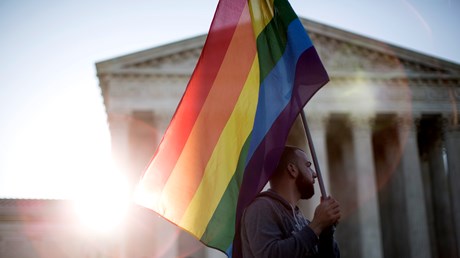Two new books approvingly chart the legal and cultural path to Obergefell v. Hodges. What can the losing side learn about battles lost, and battles still to come?

I was sitting in an airport when the United States Supreme Court announced its decision, six years ago, in Obergefell v. Hodges.
As I watched on an elevated television screen and obsessively refreshed various websites, the court legalized same-sex marriage across the country. In a lengthy majority opinion, Justice Anthony Kennedy stressed that states denying marriage licenses to same-sex couples violated the 14th Amendment. “The Court now holds that same-sex couples may exercise the fundamental right to marry,” Kennedy wrote. “No longer may this liberty be denied to them.”
Each dissenting justice wrote a separate opinion, emphasizing the pitfalls of judicial activism, the importance of legislative democracy, and the danger of the decision to religious freedom. Justice Antonin Scalia even compared the majority’s arguments and conclusions to “the mystical aphorisms of the fortune cookie.” Still, by a 5–4 vote the court held state prohibitions on same-sex marriage unconstitutional. Same-sex couples were free to marry throughout the United States.
It was a remarkable moment, one that was, according to the authors of two new books, decades in the making. In Marriage Equality: From Outlaws to In-Laws, legal scholars William Eskridge and Christopher Riano trace the history of the same-sex marriage movement in the United States, beginning in the 1970s and culminating with Obergefell some 40 years later. And in The Engagement: America’s Quarter-Century Struggle Over Same-Sex Marriage, journalist Sasha Issenberg covers the strategies and tensions motivating rival groups of political, legal, and social activists.
These are thorough, all-encompassing books, a combined 1,800 pages of ...
from Christianity Today Magazine
via


.gif)

.gif)
.gif)
